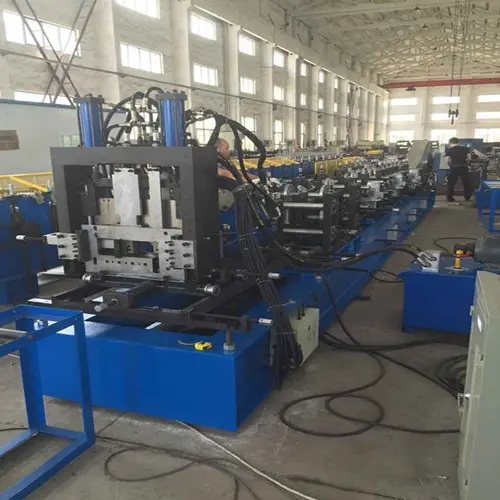
The Ceiling T-Grid Roll Forming Machine A Comprehensive Overview
In the construction and interior design industry, the demand for innovative materials and efficient manufacturing processes is ever-increasing. One such innovation is the ceiling T-grid roll forming machine, a crucial piece of equipment used in the production of T-bar ceilings. This article delves into the functionality, benefits, and significance of this machine in modern construction practices.
What is a Ceiling T-Grid Roll Forming Machine?
A ceiling T-grid roll forming machine is a specialized piece of machinery designed to fabricate T-shaped grid systems used in suspended ceiling installations. The T-grid, with its characteristic T shape, is primarily made from metal, typically galvanized steel or aluminum, which offers durability and resistance to corrosion. The roll forming machine operates by feeding raw metal strips through a series of rollers that gradually shape the material into the desired T-profile.
Key Features and Functions
1. Precision Engineering These machines are engineered to deliver high precision in the dimensional accuracy of the T-grids. This is crucial, as any deviation in size can lead to complications during installation.
2. Automatic Operation Many modern ceiling T-grid roll forming machines are equipped with automation features, allowing for efficient production with minimal manual intervention. This not only speeds up the manufacturing process but also reduces labor costs.
3. Versatility and Customization The machines can often be adjusted to produce various T-grid sizes, catering to different architectural designs. Custom shapes can also be manufactured, enabling architects and designers to maintain creative control over their projects.

5. Compact Design With space often being a premium in manufacturing facilities, modern T-grid roll forming machines are designed to be compact while still being powerful enough to deliver high-volume output.
Advantages of Using a Ceiling T-Grid Roll Forming Machine
- Cost-Effectiveness The ability to produce T-grids on demand helps manufacturers save costs related to inventory and wastage. Furthermore, the efficiency of automated machines lowers operational costs.
- Improved Quality Control Advanced features such as computerized control systems allow for real-time monitoring of the production process, ensuring consistent product quality.
- Reduced Lead Time Quick turnaround times from raw material to finished product mean that projects can proceed without delay, an essential factor in meeting tight deadlines.
- Environmental Considerations Utilizing metal as the main material allows for recyclability at the end of the product's life cycle, appealing to environmentally conscious consumers and projects.
Conclusion
The ceiling T-grid roll forming machine is not just a tool; it represents a leap in efficiency and creativity within the construction industry. As architects and designers continue to explore innovative ceiling designs and materials, the role of such machines will become even more integral in bringing those visions to life. Investing in this technology allows manufacturers to stay competitive, meet the diverse needs of the market, and contribute to the evolving landscape of modern architecture. With advancements in technology paving the way for new possibilities, the future of ceiling grid production is brighter than ever, thanks to these indispensable machines.